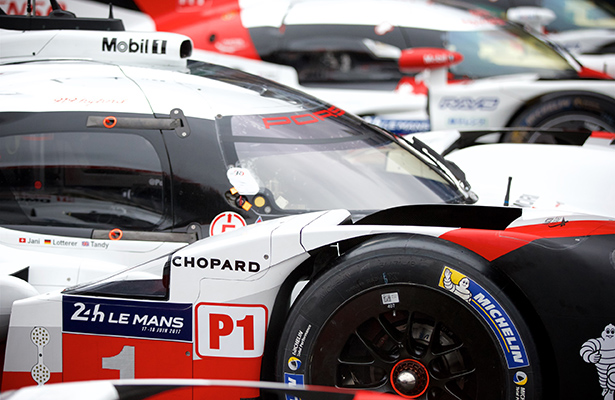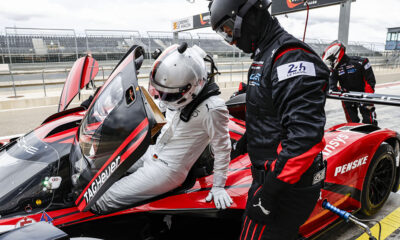The first details about the LMP1 regulations for the 2020 FIA World Endurance Championship have been confirmed by the Automobile Club de l’Ouest as it bids to attract more manufacturers to the hybrid class.
ACO president Pierre Fillon announced on the eve of this year’s 24 Hours of Le Mans that the 2020 regulations will see a greater limitation of aerodynamic development, and will remain stable for at least four years.
Aerodynamic development will be simplified in order to cut costs, with manufacturers only permitted to use one version of bodywork through an entire season. Currently they are able to use two versions.
In order to allow tweaks between high- and low-downforce circuits, LMP1 teams will have more aerodynamic variables to play with on both the front splitter and the rear wing.
The hybrid rules will remain unchanged, with a limit of up to eight 8 megajoules and two hybrid systems on each car still in place. New limits on component usage in power units and gearboxes will also be introduced.
Manufacturers will also be unable to develop an entirely new car between seasons, with restrictions on development forcing them to choose between aerodynamic, engine or chassis advances as opposed to all three.
Safety related changes will also be made, largely around the cockpit, which will be 80mm taller and slightly wider for increased driver safety, with the seat also adjusted to a 55 degree angle instead of the current 35 degrees.
In a bid to cut costs, the ACO plans to hold collective test sessions between manufacturers, and will also cut the number of wind tunnel hours for car design down to 600.
Additionally, only 50 staff will be allowed on each team from 2020, down from 65.
With electric interests being crucial for manufacturers across the world, the ACO has also confirmed new rules that will force the LMP1-H runners to embrace the technology with their prototypes.
Cars will be able to have their hybrid systems rapidly recharged at pit stops, and will then be required to complete the first 1 km after exiting the pits using nothing but electric power.
The ACO also plans to introduce a rule that requires LMP1-H cars to cross the line at the end of the race under electric power as well.
ACO Sporting Director Vincent Beaumesnil said they anticipate to maintain current performance levels.
“Keeping this performance is already a big target considering that we introduce new constraints,” he told Sportscar365.
“I think [except for] the plug in apart, which is the big new thing, all what we have introduced with regards to [focuses on] the costs.
“One bodywork per year is a big difference because we know what they spend, and now you will have the variable aerodynamics which will help to compensate this.
“We all see today the DRS in F1, but then this would be something different which is not for overtaking. It’s really to balance the car, to run the car all the race.
“It’s a different device, but it will also improve the efficiency of the car.
“Then all the costs decisions we have made with regards to the homologation of the car, the safety, it’s really a massive change.”



























